There's nothing more inspiring than taking a gander at photographs of charming creatures. While you're looking for a noontime side interest or attempting to ease a little pressure, taking a gander at cute animals is an effective method for filling your heart with joy somewhat more brilliant. However, contingent upon where you live on the planet, the absolute cutest creatures out there probably won't actually be on your radar.
In this rundown of 50 charming creatures, we investigate creatures from everywhere in the world. Whether you're keen on animals that run, bounce, swim, or fly, this rundown has a tad of everything and makes certain to show you something route.
50 Cute Animals
1. Sea Otter
Ocean otters, local to the shores of the North Pacific Ocean, are an individual from the weasel family. They are known for floating on their backs on the water’s surface, sometimes within kelp and seaweed forests. In this position, they sleep, eat, care for their young, and cuddle each other!
Ocean otters can satisfy 23 years and ordinarily, gauge between 60 and
70 pounds. Once hunted nearly to extinction for their fur, sea
otters are currently endangered.
Related: Fun Facts
2. Margay
Margays are little, wild felines that live in the evergreen and deciduous woodlands of Central and South America. They live principally in trees and utilise their long, weighty tails for balance. Mostly nocturnal, margays hunt in trees and eat birds, eggs, fruit, and small mammals.
Female margays produce a litter of only one kitten every two years. This, along with the fact that margays have been hunted for their coats, makes these majestic cats endangered.
Related: Fun Facts

3. Red Panda
Margays are little, wild felines that live in the evergreen and deciduous timberlands of Central and South America. They live principally in trees and utilise their long, weighty for warmth.
They primarily live in the Eastern Himalayas. Like giant pandas, red pandas have a pseudo-thumb, which makes it possible for them to grasp bamboo while they eat. They are the only living members of the family Ailuridae.
Related: Fun Facts
4. Elephant Shrew
The particular long nose of the elephant vixen loans an eccentric air to these little, fluffy well evolved creatures. Regardless of their likeness to mice, elephant shrews are not rodents.
They’re
not even actually shrews! They
are most closely related to a family of African mammals that includes sea cows,
aardvarks and yes elephants! Elephant vixens live in backwoods and fields in
six African nations, eat bugs, and bring forth youthful three to five times
each year.
Related: Fun Facts
5. Quokka
Quokkas, otherwise called short-followed scour wallabies, are local to Australia. Their young are classified as "joeys" and live in pouches until they’re old enough to survive on their own, like kangaroos.
Quokkas eat grasses and bushes and
can satisfy a month without a beverage of water. Rottnest Island, off the bank
of Australia, is home to around 10,000 quokkas that are known for posing for selfies with
island visitors.

6. Fennec Fox
Fennec foxes have the largest ears relative to the body size of any individual from the canid family which absolutely adds to their adorableness factor. They live in the deserts of North Africa and eat bugs like beetles, rodents, reptiles, birds, and eggs.
Fennec foxes live in family groups of up to
10 foxes in dens. There, they wait out the hottest part of the day before
hunting at night.
7. Klipspringer
Klipspringers are a sort of little pronghorn that lives in eastern and southern Africa. They can bounce up to 12 feet in the air, furthermore, with their unique hooves, they can arrive on a surface about the size of a silver dollar. Each foot is just the breadth of a dime.
Klipspringers rest
during the most sultry pieces of the day and rise up out of the rough offshoots
they call home in the mornings and early nights to brush on leaves, organic
products, and blooms.
Related: Fun Facts
8. Japanese Weasel
Japanese weasels live in bumpy and forested regions close to the water on the Japanese islands of Honshū, Kyūshū, and Shikoku. They are territorial and live in hollow logs and trees. While Japanese weasels are sometimes found in other habitats—like grasslands and small towns—they tend to avoid highly populated areas.
Japanese weasels are solitary,
nocturnal creatures, and are useful for controlling mice and rodent
populations.
9. Pika
These mountain-abiding herbivores have adjusted to flourish in unfriendly conditions. Since pikas are so little, they will more often than not live in provinces that bear the cost of the security on the treeless, rough slants they call home.
Pikas live in lairs that shield them from the virus. In the hotter months, they collect dry grasses and wildflowers in the sun and store them in their dens for the winter.
10. Quoll
Quolls are tree-staying marsupials local to Australia and New Guinea. Their particular long tails and spotted coats make these once-bountiful well evolved creatures effectively unmistakable. They are rapacious and eat little warm-blooded animals, remains, and different pieces of meat they can get their hands on.
Excluding dingos, quolls are now the largest carnivore on the Australian mainland. The smallest type of quoll weighs a little over two pounds. The largest comes in at an average weight of 11 pounds.
11. Capybara
Capybaras are the largest rodents on earth. They are closely related to guinea pigs, but they're likewise semi-oceanic. Like beavers, they're brilliant swimmers. Their toes are to some degree webbed to permit capybaras to flourish in wetlands. Like different rodents, capybaras have teeth that develop constantly, so they keep them managed by eating firm grasses and stringy plants.
This clears a path for a fairly unappetizing propensity: capybaras eat their own faeces each morning, which allows them to digest the protein-rich fibres of the plants they eat twice.
12. Patagonian Mara
The Patagonian Mara is a hare-like rat local to southern Argentina. They jump like hares, yet can likewise run and "stot," a sort of development that includes jumping straight up on all fours.
Maras travel in mated pairs, stopping to raise their young in burrows of up to 15 mated pairs. Mara males are aggressively protective and serve as guardians of their families while the females care for the young.
13. Mangalitsa
These fluffy, trained pigs seem like a hybrid of pigs and sheep. Local to Hungary, mangalitsa pigs are legacy pigs and are saved for their meat (and because they're lovable).
They are the only surviving breed of pig to have a long coat. Once nearly extinct, there are now about 60,000 mangalitsa piglets born each year.
14. Tarsier
Effectively conspicuous by their enormous eyes, tarsiers are a sort of primate that lives in the Philippines, Indonesia, and Malaysia. Tarsier's eyes are enormous to such an extent that they are some of the time bigger than their minds. Like owls, they can twist their heads 180 degrees in either direction.
Their long fingers and toes aid them as they climb trees and vines in search of their next meal. Tarsiers exclusively eat meat and favour lizards, birds, snakes, frogs, and other small animals.
15. Axolotl
Axolotls are aquatic salamanders with distinct, feathery gills on either side of their heads. Unlike other kinds of salamanders, they retain their larval features furthermore, proclivity for water all through their grown-up lives.
Axolotls are fundamentally jeopardized in the wild because of contamination, fishing, and the pet exchange. They can develop to ultimately depend on a foot long and can satisfy 15 years longer, in bondage.
16. Tawny frogmouth
Tawny frogmouths closely resemble owls but are actually not owls. They are nighttime and have a comparable facial design to owls, however, they miss the mark on sharp claws and areas of strength that owls have.
They are found all through Australia and eat bugs, worms, and snails. They live in trees and depend on their astounding cover to keep them concealed during the sunshine hours.
17. Star-nosed mole
These logical wonders are no less delightful for the way that they look so bizarre! Their noses, which are generally the size of a human fingertip, contain more than 100,000 sensitive spots that permit these poor-located animals to explore through the dim tunnels and passages they possess underground. Star-nosed moles can swim — the main types of the mole to do so — and are really capable to smell water by blowing bubbles. They are the first mammal to be able to detect scents underwater.
18. Leafy sea dragon
Verdant ocean mythical serpents keep up with their plant-like appearance to disguise the plant life on the ocean floor, as they are quite poor swimmers. They look like seahorses yet are all the more firmly connected with pipefish. Like the two seahorses and pipefish, male ocean mythical serpents care for the prepared eggs.
They convey the eggs underneath their tails, where the eggs are furnished with oxygen through an amazing organ.
19. Honduran white bat
Honduran white bats are tiny, reaching an adult size of between 3 and 5 cm long. Their feathery white coats are balanced by orange ears and noses and dark, for the most part, bald wings.
Honduran white bats live in rainforests, where they perch together topsy turvy in the focal point of leaves. They move from one leaf to another consistently, arising around evening time to chase after vegetation and natural product to eat.
20. Thirteen-lined ground squirrel
These striped squirrels resemble a cross between a squirrel and a chipmunk. They behave like most other kinds of squirrels but are set apart by the distinctive 13 stripes seven dim stripes and six light stripes that give them their name.
Thirteen-lined ground squirrels, casually known as thirteen liners, are especially dynamic on warm days and favour an eating routine of seeds, caterpillars, grasshoppers, crickets, and periodic little well-evolved creatures like a mouse or a wench. Thirteen-liners likewise appreciate eating cicadas.
21. Long-tailed tit
The long-tailed tit is found in Europe, where it constructs its nest out of feathers, moss, lichen, and spider egg cocoons. Each home normally contains around 6,000 parts. This insectivore eats the hatchlings of moths and butterflies in the forests it calls home.
There, it tends to be recognized by its particular triple-trill call.
22. Chevrotain
Also known as mouse-deer, chevrotains are the smallest hoofed mammals in the world. At their biggest, the African types of chevrotain weigh around 35 pounds. The Asian species weighs around 18 pounds. Chevrotains have lengthened canines that look like teeth, yet they miss the mark on horns that deer have. Short, slender legs underneath fairly broad bodies mean these little well evolved creatures aren't the priest.
When faced with predators, chevrotains often submerge themselves under water until the predator goes away.
23. Pygmy hippopotamus
Dwarf hippopotamuses, while intently looking like ordinary estimated hippos, are different in more than one way. They have fewer teeth, are less prepared for fast development submerged, and they ooze a pink fluid that keeps their thin skin moisturized in the sun.
These herbivores are generally shy and are more likely to flee than to fight. They are typically solitary but sometimes live in small family groups or in mated pairs.
24. Binturong
Binturongs are otherwise called bearcats. Despite not being firmly connected with either bears or felines, binturongs in all actuality do murmur and lick themselves to wash, similar to what felines do. They likewise mark their region with a fragrance that evidently smells precisely like buttered popcorn.
Binturongs dwell in the trees of northeast India, Bangladesh, Borneo, and the Philippines. They have prehensile tails, like monkeys, that allow them to hang from limbs.

25. Sand cat
These desert-abiding sand felines have been found across the Sahara Desert and in Syria, Iran, Sudan, Egypt, and in different spots across the Arabian Peninsula. They are great at digging, which is how they construct their burrows and catch small rodents for food.
Their abnormally large ears which certainly contribute to their cuteness are used to listening for the faint squeaks of their prey beneath the sand. They can go weeks without water and are primarily nocturnal to avoid the oppressive heat of the desert daytime.

26. Slow loris
These lovable nighttime primates could look blameless with their enormous eyes and fuzzy appearances, yet don't be tricked. They bite with flesh rotting venom. Despite this particularly brutal defence mechanism, slow lorises rarely use their venom against predators and certainly not against unsuspecting humans.
Instead, they reserve their venomous bite for other slow lorises to protect their territory.
27. Mink
Mink are semi-sea-going, and that implies they have waterproof fur that helps them swim quickly and get dry rapidly. Sadly, this quality has frequently been exploited by the fur industry.
Mink resemble ferrets and weasels and typically live near bodies of water where they hunt rabbits, frogs, muskrats, birds, and insects. They purr and hiss like cats.
28. Arctic fox
Arctic foxes are recognizable by their bright white coats, which help them blend into their snowy, wind-swept environments. As carnivores, Arctic foxes depend on small animals for survival and are particularly fond of lemmings. Icy foxes rest nestled into their tails to monitor warmth in their crisp natural surroundings.
They are additionally the main canid with fur on the stack of their feet which adds to the way that Arctic foxes don't start to shudder until temperatures reach –94 degrees Fahrenheit.
29. Pygmy owl
Despite their small stature (most are about the size of a sparrow), dwarf owls are known to take on prey up to multiple times their own size, including chickens! They primarily eat songbirds, which is why you can often find pygmy owls being attacked by groups of songbirds protecting their territories.
In fact, this is actually a reliable way to find
a pygmy owl. If you see songbirds swarming an area, they might be chasing off
this unlikely predator.

30. Bee hummingbird
The honey bee hummingbird is the littlest hummingbird on the planet. They measure just 2.24 crawls long! Their eggs are the size of a coffee bean. These colourful little birds sport vibrant hues of red, orange, yellow, and blue. As they fly, their wings make a sound that resembles the buzzing of a bumblebee.
Bee hummingbirds are incredibly
productive little creatures, visiting up to 1,500 flowers a day!

31. Tree kangaroo
Tree kangaroos live in the rainforests of Papua New Guinea, Indonesia, and northern Australia. There are 14 types of tree kangaroo, each with short legs and strong forearms that enable them to climb. They look a little like a cross between a kangaroo and a lemur and spend their days munching on vegetation.
Tree kangaroos are believed
to be a threatened species, as
they face deforestation in their natural habitat.
32. Pygmy goat
There are a few types of dwarf goats local to different regions of the world, but they all have their small stature in common. Ordinarily, dwarf goats weigh somewhere in the range of 30 and 80 pounds and stand at something like 3 feet high.
Large numbers of them are valued for their bountiful fur and ability to clear brush and weeds by grazing. Pygmy goats are known to have sweet dispositions and are often kept as pets.

33. Aardwolf
Aardwolves look like more modest, striped hyenas. They are timid and essentially nighttime. Aardwolves are local to Africa. The name "aardwolf" signifies “earth-wolf” in Afrikaans. Aardwolves sport sticky tongues that allow them to lap up their favourite food: termites.
These insectivores
prefer termites above all other kinds of food. To make the most of their
preferred cuisine, they have their pups during the rainy season when termites
are most active!
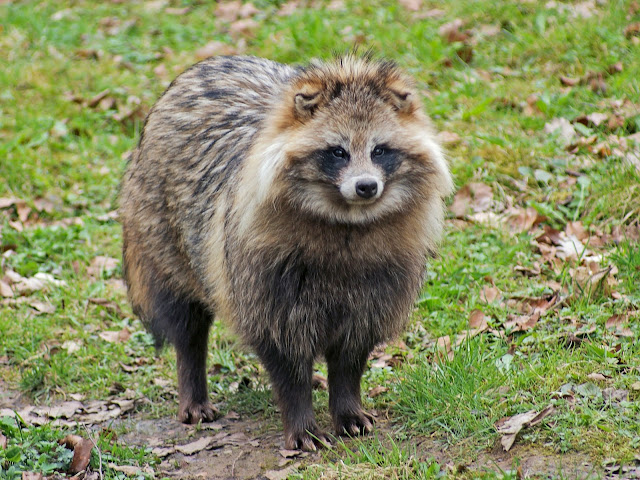
34. Racoon dog
Racoon canines are local to Asia and, despite their name, are most firmly connected with foxes. They consistently climb trees and appreciate eating voles, frogs, grouse, natural products, and veggies.
Racoon canines are thought
of as an invasive species in
Europe, where they were introduced as a result of the fur trade. They are
the only canids that hibernate.
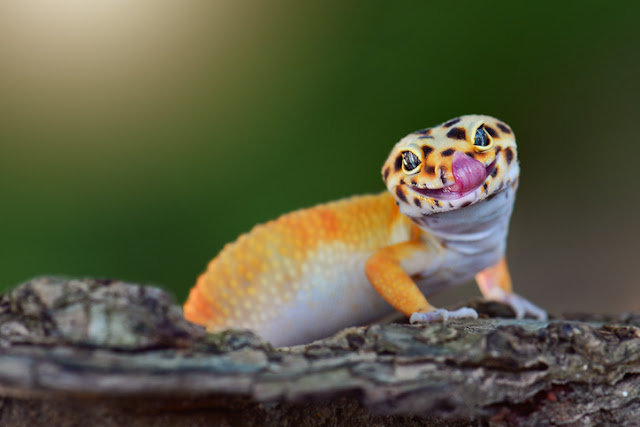
35. Gecko
Over 1,000 types of reptiles make up the suborder Gekkota and can ordinarily be called geckos. Frequently kept as pets, these little, savage reptiles feed on bugs and are known for the blue cushions on the bottoms of their feet that permit them to adhere to surfaces to climb. Geckos are exceptionally quick, which permits them to get away from hunters.
They
also detach their tails when
threatened and can regenerate them later on. Unlike many other lizards,
geckos vocalize by chirping and barking.
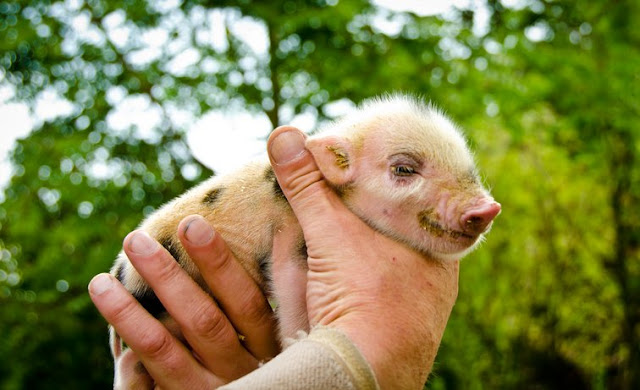
36. Miniature pig
Small pigs, once in a while called teacup pigs, have acquired fame as pets as of late. Seeing why is simple! That's what specialists caution albeit these sweet-mannered creatures may be little when they're youthful, they can, in any case, develop to be as enormous as 100 pounds in adulthood, meaning many miniature pig owners get a lot more than they bargained for.
The lowest realistic weight for a miniature pig is considered to be around 70 pounds. Miniature pigs have sometimes been trained as therapy animals to bring comfort to those in nursing homes, hospitals, and schools.

37. Cuttlefish
Cuttlefish are cephalopods like octopi and squids and feature an internal shell called a cuttlebone. The cuttlefish evolved about 21 million years ago furthermore, is accepted to impart a precursor to old land creatures. Some cuttlefish species produce a poisonous toxin that permits them to avoid hunters, and most produce ink that has been utilized as both a colour and a medication.
There is
something else than 120 different species of
cuttlefish, each of them sharing the same elongated shape.

38. Quetzal
Five species of bird are viewed as quetzals, each living in the neotropics of Central and South America. Quetzals are vivid birds, and a few animal groups have tail feathers that spread out behind them as they fly. The tail quills of a male quetzal can be up a meter long! Talented trackers and quetzals are omnivorous and frequently eat frogs, reptiles, bugs, and snails.
They live near the highest point of the
backwood overhang, where they nest inside trees within holes they carve
out with their beaks.

39. Okapi
The okapi is the only living relative of the giraffe. It looks like a combination of a deer and a zebra. Tall, upstanding ears permit the okapi to hear faint sounds and, similar to the giraffe, it has a prehensile tongue to eliminate leaves and buds from the parts of trees and bushes.
Okapi
is most agreeable in rainforests and is native to the Democratic Republic of Congo.

40. Spectacled bear
The spectacled bear also called the Andean bear, has a distinct, tan or white pattern on its face that looks like a pair of spectacles. It’s the only species of bear in South America. Spectacled bears are considered moderate size bears and ordinarily stand at around a few feet at the shoulder.
Since they're timid and careful
about people, spectacled bears are hard to study. They eat more than 300
various types of plants (and 20 sorts of creatures) and have even been known to eat cacti.

41. Gerenuk
The name "gerenuk" signifies "giraffe-necked" in Somali, and seeing why is simple. These long-necked gazelles hail from the Horn of Africa and a few pieces of East Africa. Their heads are minuscule for their bodies, however, their flighty extents make it workable for them to stand on their hind legs to eat vegetation off of high shrubs and trees.
Gerenuk males have lyre-shaped horns that add to their whimsical appearance.

42. Tamandua
Tamanduas are a sort of insect-eating animal, even though they are a lot more modest than the insect-eating animals you may know about. They weigh simply 5 to 17 pounds. Tamanduas have the lowest body temperature of any land mammal.
Despite their sweet faces, tamanduas are an animal you might
not want to get too close to when threatened, they spray a stinky secretion that’s
four times stronger than the smell of a skunk.

43. Viscacha
The viscacha, also spelt vizcacha, might look like a cuddly rabbit, but it’s not a rabbit at all. Viscachas are really a sort of chinchilla. You can guess by their long, rugged tails, which are a brand name normal for the Chincillidae family.
All five species of viscacha live in
southern and western South America. They live in colonies and have an average
weight of about 3.5 pounds.

44. Tamarin
Tamarin monkeys are generally about the size of a squirrel and sometimes sport long, white, moustache-like facial hair. They possess the trees of tropical rainforests, where they swing among branches and quest for natural products, bugs, and bird eggs to eat.
The brilliant lion
tamarin is quite possibly of the most conspicuous sort, with its full leonine
mane. Brilliant lion tamarins were once critically endangered, but
after conservation efforts, they were reclassified as only endangered in 2003.

45. Sugar glider
Sugar gliders, like kangaroos, are marsupials. Unlike kangaroos, they are sometimes kept as pets in the United States. Sugar gliders are highly social creatures and, when kept as pets, ought to continuously be kept with other sugar lightweight planes, given all creatures have been fixed or fixed. In the wild, they live in provinces of up to seven grown-ups and their children, called joeys.
Sugar
lightweight planes have a layer between their wrists and their lower legs that
permits them to "skim" from one tree to another. They weigh simply 3
to 5 ounces.
46. Platypus
Another fascinating Australian creature, the Tasmanian demon was made well known by the Looney Toons character of a similar name. The Tasmanian demon, a marsupial, Platypuses are found only in Australia, and their elusive nature means they are difficult to study.
As a result, there’s still a lot we don’t know about them or their habits.
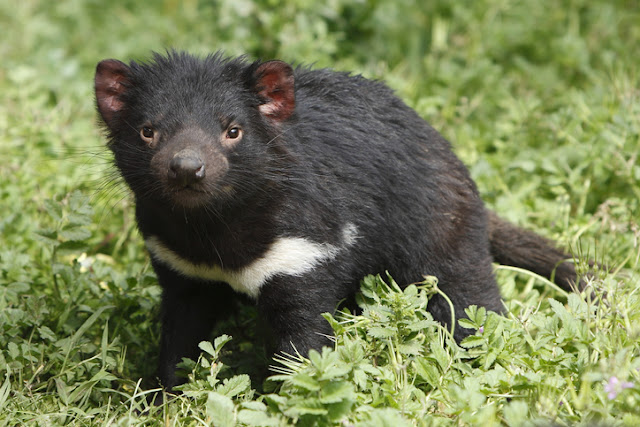
47. Tasmanian Devil
Another intriguing Australian creature, the Tasmanian fallen angel was made renowned by the Looney Toons character of a similar name. The Tasmanian fiend, a marsupial, has a fearsome reputation.
They
are known for shrieking, emitting a foul odour, and opening their mouths into an
intimidating “gaping” position that’s meant to warn off adversaries. Tasmanian devils are a protected
species and are thought to have gone extinct on the mainland about 400 years ago.

48. Culpeo
Calpers are pioneering hunters, and that implies they'll chase any sort of advantageous prey. Before, culpeos were trained to make Fuegian canines, a type of canid that is currently terminated. Calpers is thought of as endangered.

49. Verreaux’s Sifaka
Verreaux's Sifaka is a sort of lemur which, as different individuals from the lemur family, is found only in Madagascar. Its long tail is utilized for balance as it makes a trip from one tree to another. Sifakas are all around adjusted to life in the trees to such an extent that they don't have the foggiest idea of how to stroll on the ground.
They can
hop. Verreaux's Sifakas appreciate sunbathing and live in bunches called troops,
which contain somewhere in the range of 2 and 12 grown-ups. Starting around
2020, Verreaux's Sifakas are critically endangered.

50. Snowshow Hare
Snowshoe bunnies live in the boreal woods of North America. Their fur changes in colour all through the year from brown to white to assist them with covering their current circumstance. The interesting state of this rabbit's foot gives it its name, permitting the bunny to jump on the snow without falling in.
Snowshoe hares eat plants and the growth on woody vegetation, and
in the winter content themselves with twigs and bark.














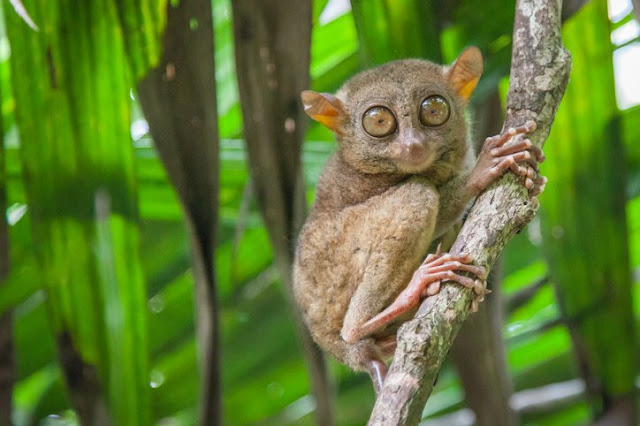



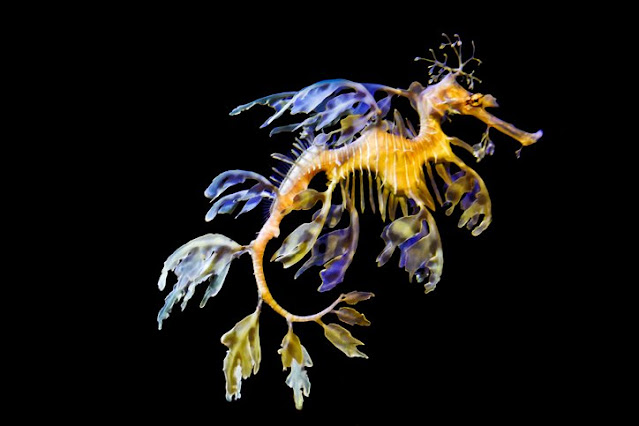












0 Comments